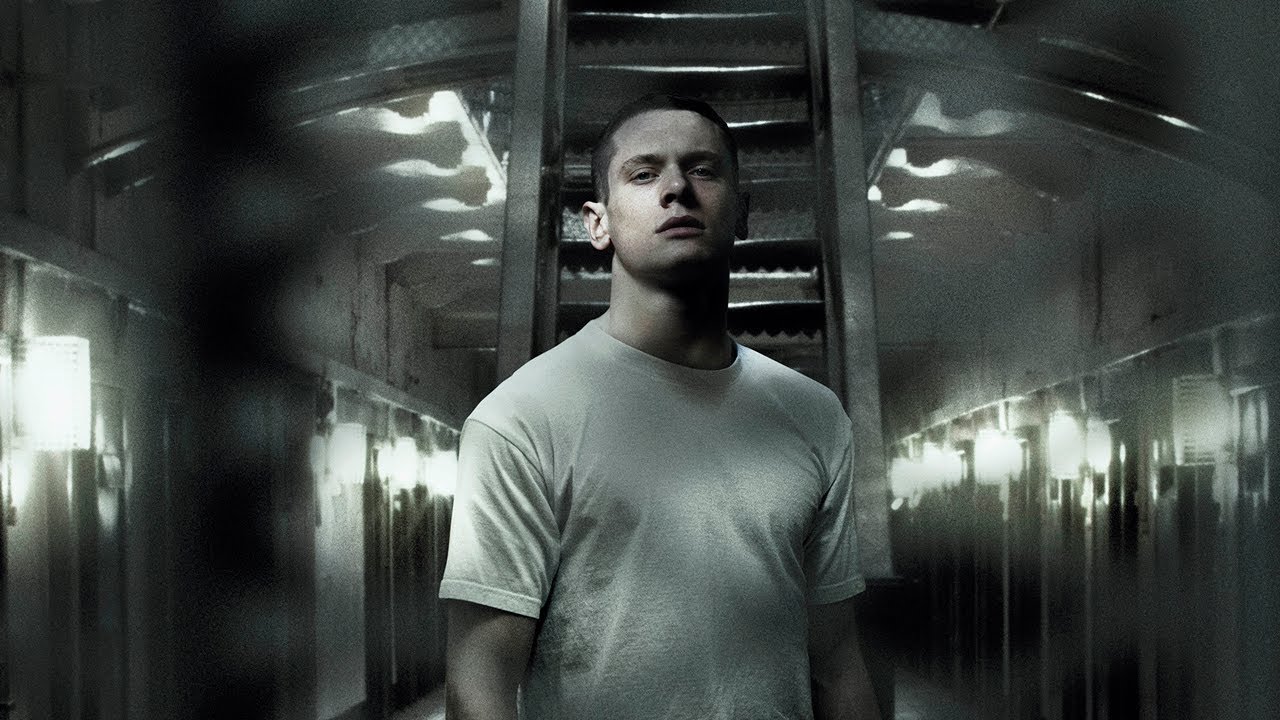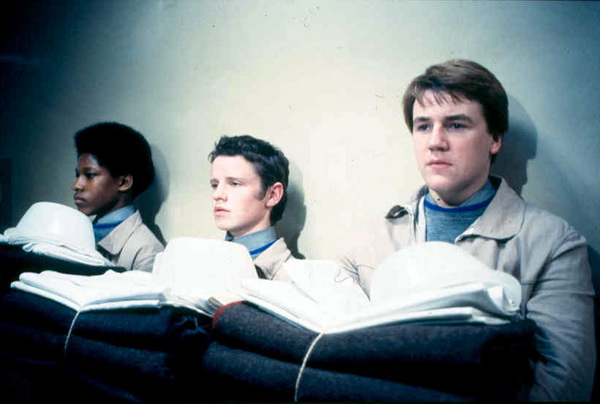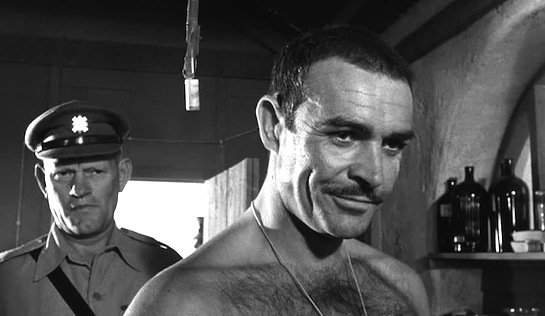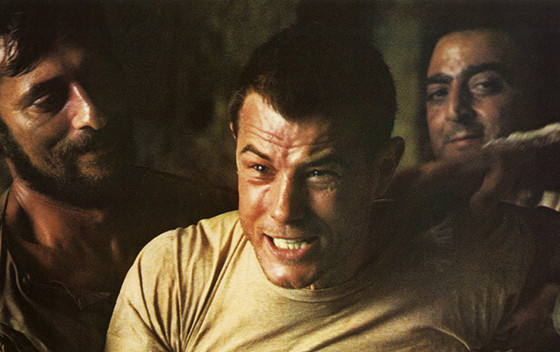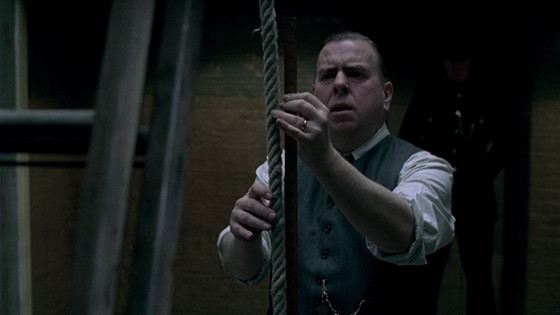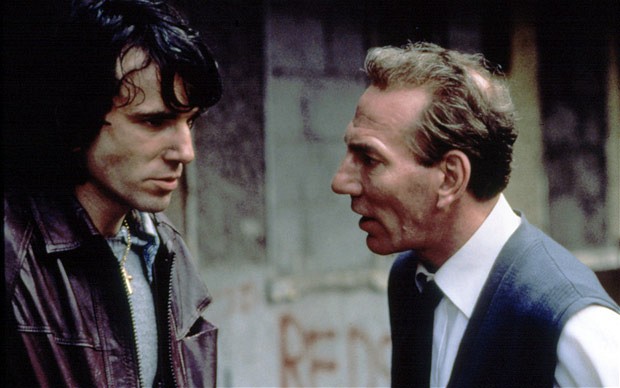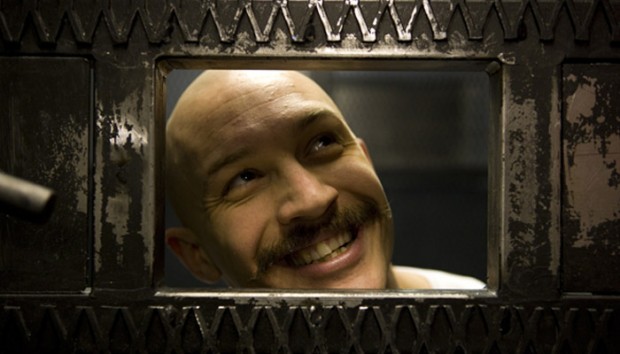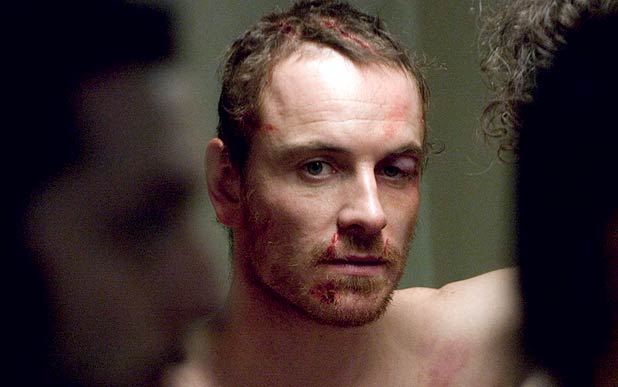8. Starred Up (2014)
Whilst the likes of Kidulthood and Offender have attempted to map the rapid demise and ruin of ignorant and angry teens of the twenty-first century, they have largely fallen short in their attempts to get to the core of these youths and have lacked sufficient character development. Starred Up is the quality movie about vicious and unreasonable youths that has bubbling up for years. David Mackenzie takes the intimidating youthful atmosphere of the likes of Eden Lake and locks it up in a venomous adult prison, acquiring Lake’s key star in the process – Jack O’Connell.
Whilst the young actor was impressive in 2008’s hoody-horror, he steps up along with his character Eric Love in Starred Up, a heated youngster who’s transferred from a youth offenders institute to HM Prison Wandsworth in London – a jail filled with some of the UK’s most dangerous living individuals. Eric can aptly be described as animalistic.
Upon his arrival, fellow prisoners predictably bait and taunt him, but soon come to resemble veteran matadors who are eventually forced to swerve the snorts, grunts and charges of a vicious bull of an adolescent. Perhaps the most unnerving thing about Love is how he isn’t stupid; on his first day in his new home he even fashions malevolent-looking weapons out of previously innocent bathroom products.
Such wired creativity in a vehement individual makes for a chilling character, who resembles a snarling beast whenever he’s on screen. It’s a splurge of testosterone and enormously violent, but Starred Up’s smart screenplay, terrifically terrifying mise-en-scene and deep, heartfelt performances create a film that in another time could serve aptly as compulsory viewing to scare troublesome youngsters straight. Due for an imminent DVD release, Starred Up will come to represent a landmark in UK prison cinema, and as a jail-time drama it is worth seeing at all costs.
7. Scum (1979)
If there were ever such thing as a ‘Prison Nasty’, then Scum is definitely it. Gritty, abrasive and raw to the point of searing, Alan Clarke’s graphic and controversial prison piece has earned iconic status amongst not only penal film, but British cinema as a whole. Scum’s release came to resemble the ‘Video Nasties’ that entered circulation in the early eighties in its creation of panic, uproar and fierce condemnation, yet the film’s cult following eventually blossomed into critical acclaim.
A fresh-faced Ray Winstone stars as Carlin, a young convict who rises through the ranks of the prison inmates through acts of brutal and unforgiving violence. Clarke creates a portrait of prison as a system that fails both its employees and inhabitors, operating as a space for acts of scum; drawing on the snippets of violent disorder that scattered Losey’s The Criminal almost twenty years prior. British to its bones and obsessively violent, Scum shows British prison as an eruption of rioting and rabid men who, led by Carlin, attempt to overthrow the system of the “screws” through brute force and anger.
Still shocking over thirty years after its release, Clarke’s film not only serves to stun, but also to teach about the dangers and incapabilities of locking together the most dangerous men in the country. Carlin even sees it as a life lesson, “Think it’s a big bad world outside do ya?” he asks, “You should get put inside, then you’ll learn a thing or two”.
6. The Hill (1965)
Whilst the inclusion of The Hill may seem like a bit of a cheat given its war camp setting as opposed to a concrete slammer; omitting a jewel in the crown of British prison cinema on a technicality seems criminal in itself. Sean Connery stars in one of the first pictures from the great Sidney Lumet as Joe Roberts, a man sent to the military detention camp for assaulting his former commanding officer.
The Hill charts the camp as one of unjust cruelty, with Roberts representing the sole protestor of the sadistic Sergeant Stevens’s tyrannical and abusive reign over the prisoners. UK to the core and stuffed with stern performances, The Hill remains a classic of sixties cinema, portraying the struggles and entrapment of being held in captivity. Connery’s trademark scoffing warble punctuates the picture, which is at its best when he’s on-screen. Containing some powerfully distressing scenes and colourful characters, The Hill is a captivity classic.
5. Midnight Express (1978)
Although not a wholly British production, Midnight Express earns its place on the list of great prison Brit-pics for an input of English influence from a variety of sources – most prominently the great Alan Parker, whose direction here ensures for a prison film that demands to be seen.
Set amidst terrifying Turkish cells, Midnight Express creates an unsettling and captivating portrayal of foreign prison and a helpless young man’s descent into madness. Arrested on his way home from a holiday in Turkey with his girlfriend for attempting to smuggle some hashish back home, protagonist Billy Hayes (played spiritedly by Brad Davis) is thrown into Turkish prison and suffers an immense breakdown due to fear, sickening intimidation and claustrophobia.
Parker’s camera aptly captures the immense pressure on an abandoned individual serving thirty years for a couple of stupid mistakes. Featuring a young John Hurt (on absolute top form) and even a strangely youthful Randy Quaid, Midnight Express’s consistent ability to shift seamlessly between strong scenes makes it too good to ignore and an undisputedly intense Eastern prison portrait.
4. Pierrepoint: The Last Hangman (2005)
It’s peculiar to think of the UK enacting capital punishment. Britain now seems so far away from executions that it would be forgivable to consider the events of Pierrepoint: The Last Hangman as being from a much earlier time than they actually are. In reality, the death penalty was not abolished in Britain until 1965, and Adrian Shergold directs Timothy Spall in the main role as one of the countries last ever executioners in an intriguing prison drama that examines a subject that British society largely seem to have left behind years ago. Albert Pierrepoint was not only one of the final hangmen, but also one of the most prolific and longest-serving.
Shergold’s film depicts Pierrepoint’s unenviable occupation as work of considerable skill and, to an extent, art. Yet it also illustrates the contrast between the fragility of men’s final moments and the professionalism of a man who took life away from them. Low-angle shots, stints of handheld camera and tight-framing convey an appropriately claustrophobic mise-en-scene, with the grotty prison décor encompassing a grim tale of death by order.
Pierrepoint himself resigned in 1954, with a quote amongst the film credits reading as “My experience has left a bitter aftertaste”. Spall reflects Pierrepoint’s gradual breakdown from a specialist to snivelling shell of a man wracked with guilt unsurprisingly well, with Shergold competently pulling the strings all the way. Another example of a film initially released for television, Pierrepoint: The Last Hangman provides further demonstration that TV Brit-pics should be written off at your peril.
3. In the Name of the Father (1993)
The devoted intensity that Daniel Day-Lewis invariably brings to the screen places him at the front of the queue for any British role demanding complexity; and wrongly convicted Irishman Gerry Conlon unquestionably fits the bill. Having set the launching pad for Day-Lewis’s brilliance with My Left Foot, director Jim Sheridan here turns to the tale of the Guildford Four; a group of young men who served 15-years for the Guildford pub bombings enacted by the IRA in 1974. Day-Lewis predictably shines as Conlon, an incredible individual who is unyielding in his fight for justice.
An enthralling prison bio-pic, Sheridan’s mature and respectful representation garnered seven separate Oscar nominations and boasts a juicy 94% approval rate on Rotten Tomatoes, cementing its place as a British prison great.
2. Bronson (2008)
Charles Bronson is an enthralling figure for so many reasons, it is little wonder that Tom Hardy snapped up the opportunity to play him. Despite having never committed murder, he has remained locked behind bars for the majority of his adult life; and if Nicholas Winding Refn’s feature-film is anything to go by, Bronson appears to be completely satisfied with this situation.
Born as Michael Gordon Peterson into a seemingly ordinary family, Bronson became consumed by a desire for fame through fighting – even changing his name to match an old movie star. He’s earned cult status since, publishing several books and bios that have provided him with minor celebrity status. Philip French calls Bronson “an artist without an art”, with Britain’s most notorious inmate placing an artistic spin on acts of raw aggression. He certainly shares the unpredictability of an artist; one moment a rich southern twang scoffs its way through his twirling villainous moustache, the next his eyes vanish as a closed-mouth grin stretches from ear to ear.
Here, Refn’s foreign art-house touch daringly takes the viewer into the maniacal mind of Bronson himself, with prison as his stage and his cell as his dressing room. The director captures Bronson’s insistent desire to put on a show; on several occasions jump-cutting to a stage where Hardy dons face paint and exuberantly addresses a theatre audience, and also sporadically switching to a shot of Bronson eyeballing and calmly addressing the camera itself. This allows the eponymous character to quite literally narrate his own life experiences, with Refn’s trademark crashing synth and seedy light thrown in for good measure.
A few years after its release, Bronson was eventually given access to see his own movie and declared it a masterpiece. That says a lot about the man, given the film’s wide and wild depictions of his thuggery, yet there remains something so uniquely bizarre about Charles Bronson that makes his bursts of violence worth consultation. Refn captures this with aplomb, as Bronson’s creative lunacy radiates out from the character and into the feel of the film for a fierce and frenzied prison flick.
1. Hunger (2008)
An instant indie British classic upon its release, Hunger’s critical acclaim is not without justification, but ought to arrive on screens with a bright red warning sign cautioning the feint-hearted. It is an unreservedly gruelling watch as the camera squeezes itself between rotten prison walls in Northern Ireland to portray an unhygienic hell. Crammed with a wide variety of cringe-worthy shots, the horror ranges from depictions of merciless brutality between officers and inmates, to excrement pasted across the walls of cells as part of dirty protest.
However, perhaps the most difficult image of all in Hunger is the atrophied body of Michael Fassbender, who essentially strips down to his skeleton for the role of the IRA’s Bobby Sands; an intransigent pioneer in the prison hunger strikes during 1981.
It is a fearless performance that almost threatens to get lost amongst the superbly structured sets and direction, which prop up a problematic story that invites all sorts of interpretations. There appears to few better suited to this sort of difficult material than Steve McQueen, and in the director’s soft and meticulous hands, Hunger glows as both an objective and humanising tale of prison disorder and decay.
Author Bio: Gareth Lloyd is a freelance writer with a Bachelor of Arts degree from the University of Manchester in English Language & Screen Studies, and a pending Master of Arts degree from Aberystwyth University in Film Studies. Along with postgraduate study, he writes articles on film, sport, music, social life and literature.
